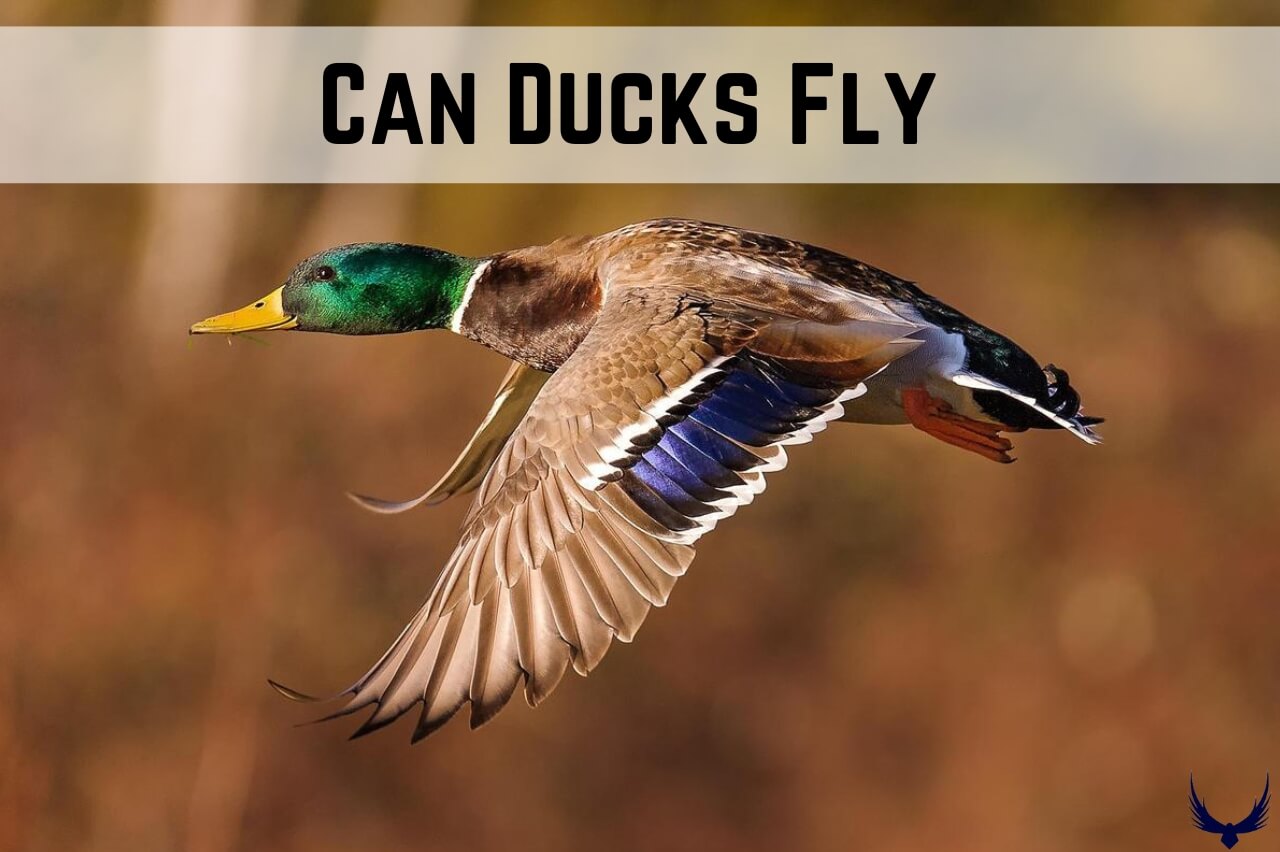Ducks are fascinating creatures that captivate people of all ages with their funny quacks and waddling walks. Many wonder if ducks can fly, as they are often seen swimming in ponds.
Let’s explore can ducks fly and learn more about their flying abilities.
Can Ducks Fly?
Ducks can fly, but not all are strong fliers. Many species of ducks can fly well as they have strong wing muscles that help them take off fast and fly up to 60 miles per hour, despite some not being able to fly at all.
Ducks fly to escape predators, find food, and migrate to warmer areas with food in the winter to survive. Flying is essential for their survival.
Can All Ducks Fly?
Ducks’ ability to fly depends on their body shape and wings. Most ducks can fly, but not all, like domestic ducks they only glide as they are too heavy and have weak wings. Domestic ducks don’t need to fly because humans provide everything they need.
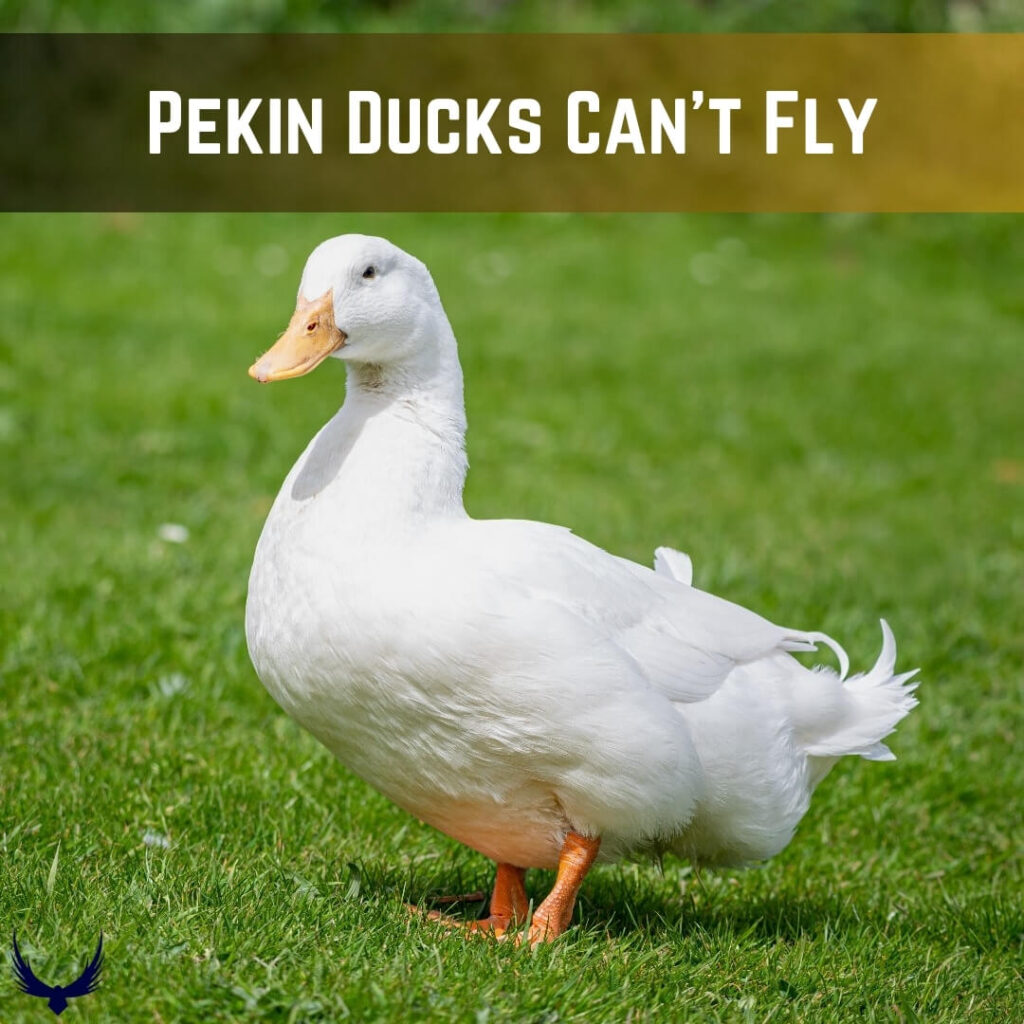
Examples of non-flying ducks include American Pekin, Rouen, and Indian Runner ducks. Pekin ducks are popular for meat and eggs and are too heavy to fly. Rouen ducks are large and used for decoration. Indian Runner ducks prefer running and standing upright.
Some duck species, like Mallards and Pintails are fast flier ducks and can take off almost straight up.
Why do Ducks Fly?
Ducks usually fly because they don’t like the cold weather, so they fly to warmer places in winter to find food and avoid icy water. They also fly to their breeding grounds to have ducklings. They make these flights twice a year, in the spring and fall. During migration, ducks fly for a long time, using landmarks, stars, and the Earth’s magnetic field to find their way.
Ducks fly to stay safe from predators like owls and raccoons. Night flying helps them travel through dangerous areas during the day and find safer places to rest.
How High Can Ducks Fly?
Different types of ducks fly at different heights. Ducks fly high to avoid overheating and dehydration. But most birds fly at 500 feet during migration to save energy and avoid predators like hawks and eagles. Some ducks can fly high up to 21,000 feet, though some stay at 4,000 feet. Domestic ducks, on the other hand, are usually too heavy or have clipped wings, so they cannot fly at all.
How Fast do Ducks Fly?
Ducks can fly at different speeds depending on their species and individual abilities, but ducks are fast birds that fly quickly to travel long distances and escape predators. Most duck species can fly at speeds of 40 to 60 miles per hour (mph), with an average speed of 50 mph.
Blue winged Teal and Green winged Teal may appear fast at 30 miles per hour, they are slower than other duck species. Mallard and Wood duck flies at 50 mph during migration. The Canvasback is even faster, reaching speeds of 70 miles per hour. The Red breasted Merganser holds the record for the fastest duck, flying at 100 mph.
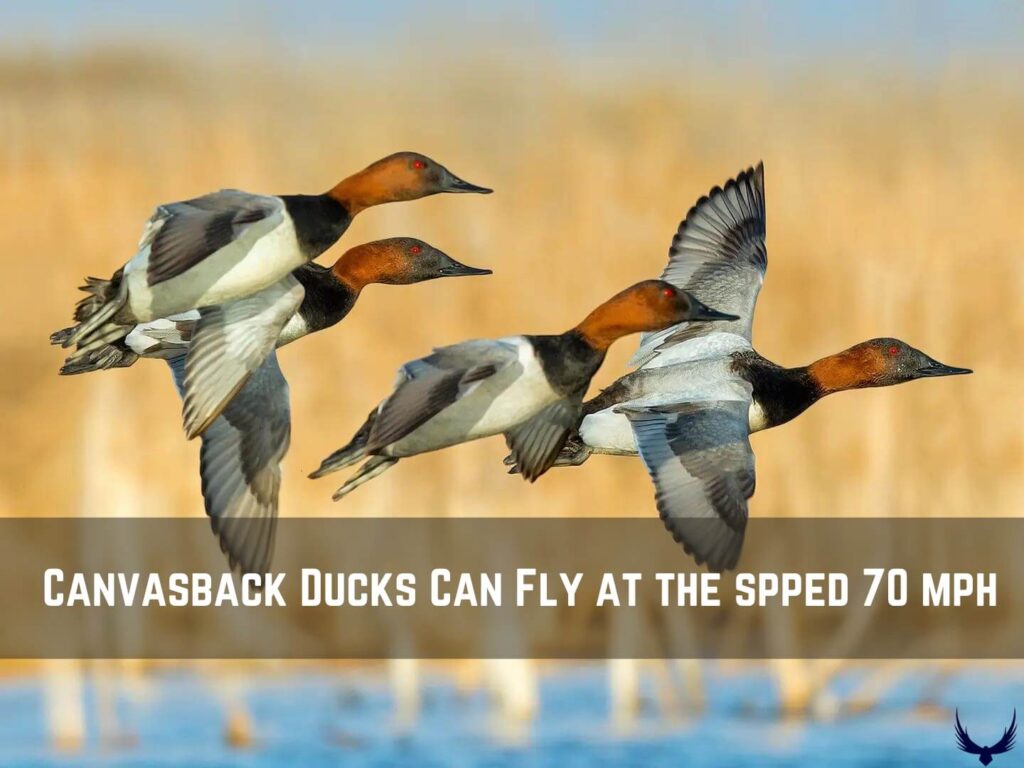
The above-mentioned ducks have long wings and fast wing beats and cannot fly slowly because of their quick wing beats, showing their adaptation to their environment, unlike Muscovy Ducks, geese, and swans.
How Far Can Ducks Fly?
Ducks can fly long distances during migration but the distance they travel depends on the type of duck, their health, weather, and other factors. Many species fly for hundreds of miles without breaks during migration.
For example, Northern Pintail flew nearly 2,000 miles (about 3218.69 km) before landing and Mallards can also migrate long distances of about 800 miles in 8 hours. Blue-winged Teals fly from North America to Peru and Venezuela. Some ducks migrate from Canada forest to Coastal Texas, California, Mexico, and beyond.
Why do Ducks Fly in a V Shaped Formation?
Ducks fly in a V formation for two reasons. This shape make flying easier and help birds to follow the leader. Ducks use this V-shaped formation during migration to conserve energy and reduce wind resistance, like groups of planes. The leader faces strong winds at the front tip of the V, helping other ducks behind.
This teamwork helps them combat exhaustion and makes the long journey easier. Each duck plays a crucial role in maintaining the V formation, switching positions frequently to evenly distribute energy expenditure. By sharing the energy load, the ducks work together to fly across continents with great teamwork and coordination.
How Far Can Ducks Fly in a Day?
The distance ducks travel in a day depends on their species, health, weather, and other factors. Some ducks can fly hundreds of miles in a day. Mallard ducks, for example, can fly up to 800 miles in a day (8 hours) during migration with a 50-mph tailwind but it takes them 3 to 7 days of eating and resting to recover from this flight.
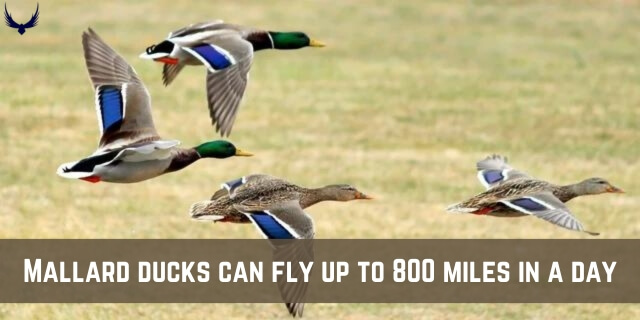
Different duck species have different travel ranges. Ducks are known for their impressive ability to cover long distances during migration, especially during migration season.
Do Ducks Fly Alone or in Groups?
Ducks often fly together in groups during migration or when looking for new places to breed or find food. During the breeding season, a group of three ducks known as “three bird flights” will fly together. The group of ducks includes a mating pair and another male looking for a mate.
Do Ducks Get Tired of Flying?
Ducks are skilled fliers but can get tired after flying for a long time, even though they have strong wing muscles. Flying for a long time can make them exhausted, both physically and mentally, because they need to stay alert and focused while flying.
Can Ducklings Fly?
Ducklings can’t fly right after they hatch. They rely on their parents for safety and to learn important skills like swimming, flying and finding food. Ducklings usually start flying in five to eight weeks.
Do Ducks Fly in the Rain?
Ducks can and do fly in the rain because their feathers have a special waterproof coating that keeps them dry. The rain simply rolls off their backs and wings.
However, ducks usually prefer not to fly in heavy storms or very strong winds, as these conditions make flying more difficult and dangerous. They’ll often take shelter and wait for severe weather to pass.
Do Ducks Fly South for the Winter?
Some ducks do fly south during winter, heading to warmer places where they can find food and open water that isn’t frozen. This is called migration.
Not all ducks migrate though – some species stay in the same place year-round if they can find enough food and the weather isn’t too harsh. These are called resident ducks.
How High Can Pekin Ducks Fly?
The Pekin duck, also known as the White Pekin, an American breed of domestic duck. It is a type of duck raised mainly for its meat. They have big bodies and small wings, so most Pekin ducks cannot fly at all. While some smaller Pekin ducks may be able to jump and flap their wings to fly short distances.
What is a Group of Ducks Called?
A group of ducks is called a Team. Other names used for groups of ducks are Flock, Raft, Brood, and Waddling. Ducks are social birds that prefer being in large groups for safety.
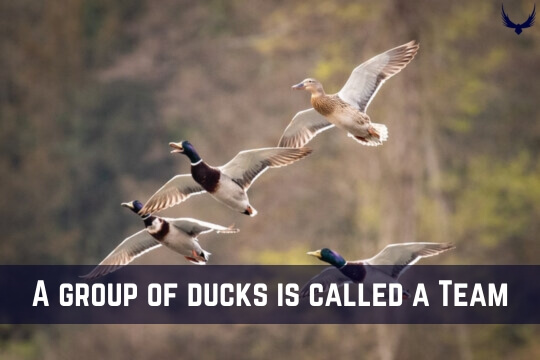
Do Ducks Fly at Night?
Ducks can fly at night. Ducks usually fly for specific reasons like migrating or escaping from predators. Some duck species fly at night, but they prefer flying during the day.
What do Ducks Eat?
Ducks, like chickens, eat a variety of foods besides their regular feed to stay healthy and have strong wings. You can give them treats like bananas, pears, grapes, apples, strawberries, peaches, plums, watermelon, rice, wheat, barley, peas, cantaloupe, beans, tomatoes, broccoli, cabbage, cucumbers, and carrots.
FAQs – Can Ducks Fly 2024
How High Can Mallard Ducks Fly?
Mallard ducks have been recorded flying as high as 21,000 feet, but when they migrate long distances, they usually fly between 500 and 4,000 feet.
How High Can Muscovy Ducks Fly?
Muscovy ducks usually stay near water or land when flying for a long time, unlike other migrating birds. They sometimes fly up to 60 feet to nest in a tree cavity, but they don’t usually fly that high for long.
How Fast Can Mallard Ducks Fly?
Mallard ducks live in wetlands in the Northern Hemisphere and are great at swimming and flying. They can fly up to 50 to 55 mph.
How Fast Can Wood Ducks Fly?
Wood ducks are skilled flyers in the sky and water. They can fly fast, reaching speeds of 50 mph over open areas. They are especially good at flying through dense forests, smoothly and quickly moving between trees with ease and accuracy.

